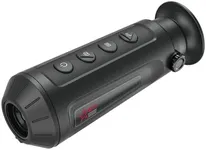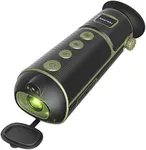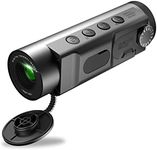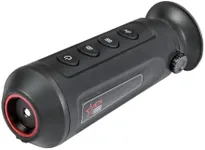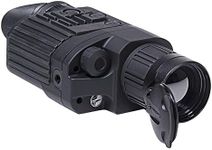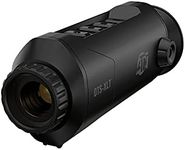Buying Guide for the Best Thermal Monoculars
Choosing a thermal monocular can be a bit overwhelming, but understanding your needs and the key features will help you make the right decision. Thermal monoculars are used for detecting heat signatures, making them useful for outdoor activities like wildlife observation, search and rescue, security, and even navigation in darkness or fog. To find the best fit, think about how and where you plan to use the device, and then focus on the main specifications that affect performance and usability.Sensor ResolutionSensor resolution refers to the number of pixels in the thermal sensor, which determines how detailed the thermal image will be. Higher resolution means clearer and more detailed images, which is important for identifying objects at a distance or in complex environments. Sensor resolutions are often divided into low (around 160x120), medium (320x240), and high (640x480 or above). If you need to spot and identify small or distant objects, go for a higher resolution. For basic navigation or close-range use, a lower resolution may be sufficient.
Detection RangeDetection range is the maximum distance at which the monocular can detect a heat source, such as a person or animal. This is important if you need to spot objects far away, like in open fields or large properties. Detection ranges can vary from a few hundred meters to over a kilometer. If you plan to use the monocular in wide, open areas, choose a model with a longer detection range. For use in forests or smaller spaces, a shorter range may be adequate.
Lens Size (Objective Lens Diameter)The lens size, usually measured in millimeters, affects how much infrared energy the monocular can collect. Larger lenses gather more heat signals, which can improve image quality and detection range, especially in low-contrast conditions. Lens sizes typically range from 13mm to 50mm or more. If you need better performance at longer distances, opt for a larger lens. For portability and close-range use, a smaller lens is lighter and easier to carry.
Refresh RateRefresh rate is how often the image updates per second, measured in Hertz (Hz). A higher refresh rate (like 50Hz or 60Hz) results in smoother images, which is helpful when tracking moving objects or scanning quickly. Lower refresh rates (around 9Hz or 30Hz) may cause choppier images but can save battery life. If you expect to follow fast-moving subjects or need a more natural viewing experience, choose a higher refresh rate. For stationary observation, a lower rate may be fine.
Display Type and ResolutionThe display inside the monocular shows the thermal image. Display resolution and type (such as OLED or LCD) affect how clearly you see the image. Higher display resolutions provide sharper images, making it easier to identify details. OLED displays often offer better contrast and color, which can help in distinguishing objects. If you value image clarity and comfort, look for a higher-resolution, high-quality display. For basic spotting, a standard display may suffice.
Battery LifeBattery life determines how long you can use the monocular before needing to recharge or replace batteries. This is crucial for extended outings or situations where charging isn’t possible. Battery life can range from a couple of hours to over eight hours, depending on the model and settings. If you plan to use the monocular for long periods or in remote areas, prioritize longer battery life. For short trips or occasional use, shorter battery life may be acceptable.
Weight and SizeThe weight and size of the monocular affect how easy it is to carry and use, especially for long periods. Lighter and more compact models are easier to handle and transport, which is important for hiking or travel. Heavier models may offer better performance but can be tiring to hold. Consider how much portability matters to you and choose a size and weight that matches your intended use.
Durability and Weather ResistanceDurability and weather resistance refer to how well the monocular can withstand rough handling, moisture, dust, and temperature extremes. Look for features like waterproofing, shock resistance, and rugged construction if you plan to use the device outdoors or in challenging conditions. If you’ll mostly use it in mild environments, basic durability may be enough.

